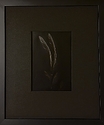AbsurdePhoton
Member
Hi there,
once again i have questions and need help. Some of you know that I am conceiving an analog films simulation system, that works pretty well for B&W films, and much less for color ones.
I have lately rethought entirely my grain simulation, and I must admit it is far superior to every others attempts.
Now that I have a solid algorithm, I need data to characterize silver halide particles and emulsion layers.
My system has these parameters for particles :
* size
* main number of "sides" (4 for cubic, 8 for octahedron, etc, up to 10)
* standard deviation, that means that grain sizes can vary much or less (or be the same if std=0) - for the moment I limit it up to 3 times the base size, but I could be wrong about this
Layers (i.e. one layer of silver particles) :
* filling, i.e. the percentage of particles coverage in the emulsion
* number of layers (depends upon the type and size of the grains) - between 20 and 60 works well - T-grains have thinner emulsion coating, their thickness is about 0.10-0.12µm, so the number of "layers" varies with the type of grain. 50 layers x 0.12 = 6µm
All the above parameters could change for each "layer". I could also consider "fast" and "slow" ones, not tried that yet.
The difficulty is finding this kind of information for the films. Some are based on "old" silver particle types, other are based on T-grain, and others have layers for "fast" and "slow" particles, up to 3!!!
I could gather bits here and there (mostly in renowned books by Mees and others), but the information is scarce and mostly incomplete. Electron microscope images can also help if a scale is given. I could find for example that HP5 had a 6µm "fast layer" and a 3µm "slow" layer, but I don't have a clue about the types of particles used for each.
What I would need is sources describing known films, like Panatomic-X or HP5+ - the tech sheets rarely describe the film layers, and even less their thickness (in µm) for example, or even the types of particles for slow and fast layers when they exist.
I hope some of you have the knowledge or could advice books / pamphlets / technical documents, etc.
thanks in advance.
once again i have questions and need help. Some of you know that I am conceiving an analog films simulation system, that works pretty well for B&W films, and much less for color ones.
I have lately rethought entirely my grain simulation, and I must admit it is far superior to every others attempts.
Now that I have a solid algorithm, I need data to characterize silver halide particles and emulsion layers.
My system has these parameters for particles :
* size
* main number of "sides" (4 for cubic, 8 for octahedron, etc, up to 10)
* standard deviation, that means that grain sizes can vary much or less (or be the same if std=0) - for the moment I limit it up to 3 times the base size, but I could be wrong about this
Layers (i.e. one layer of silver particles) :
* filling, i.e. the percentage of particles coverage in the emulsion
* number of layers (depends upon the type and size of the grains) - between 20 and 60 works well - T-grains have thinner emulsion coating, their thickness is about 0.10-0.12µm, so the number of "layers" varies with the type of grain. 50 layers x 0.12 = 6µm
All the above parameters could change for each "layer". I could also consider "fast" and "slow" ones, not tried that yet.
The difficulty is finding this kind of information for the films. Some are based on "old" silver particle types, other are based on T-grain, and others have layers for "fast" and "slow" particles, up to 3!!!
I could gather bits here and there (mostly in renowned books by Mees and others), but the information is scarce and mostly incomplete. Electron microscope images can also help if a scale is given. I could find for example that HP5 had a 6µm "fast layer" and a 3µm "slow" layer, but I don't have a clue about the types of particles used for each.
What I would need is sources describing known films, like Panatomic-X or HP5+ - the tech sheets rarely describe the film layers, and even less their thickness (in µm) for example, or even the types of particles for slow and fast layers when they exist.
I hope some of you have the knowledge or could advice books / pamphlets / technical documents, etc.
thanks in advance.










